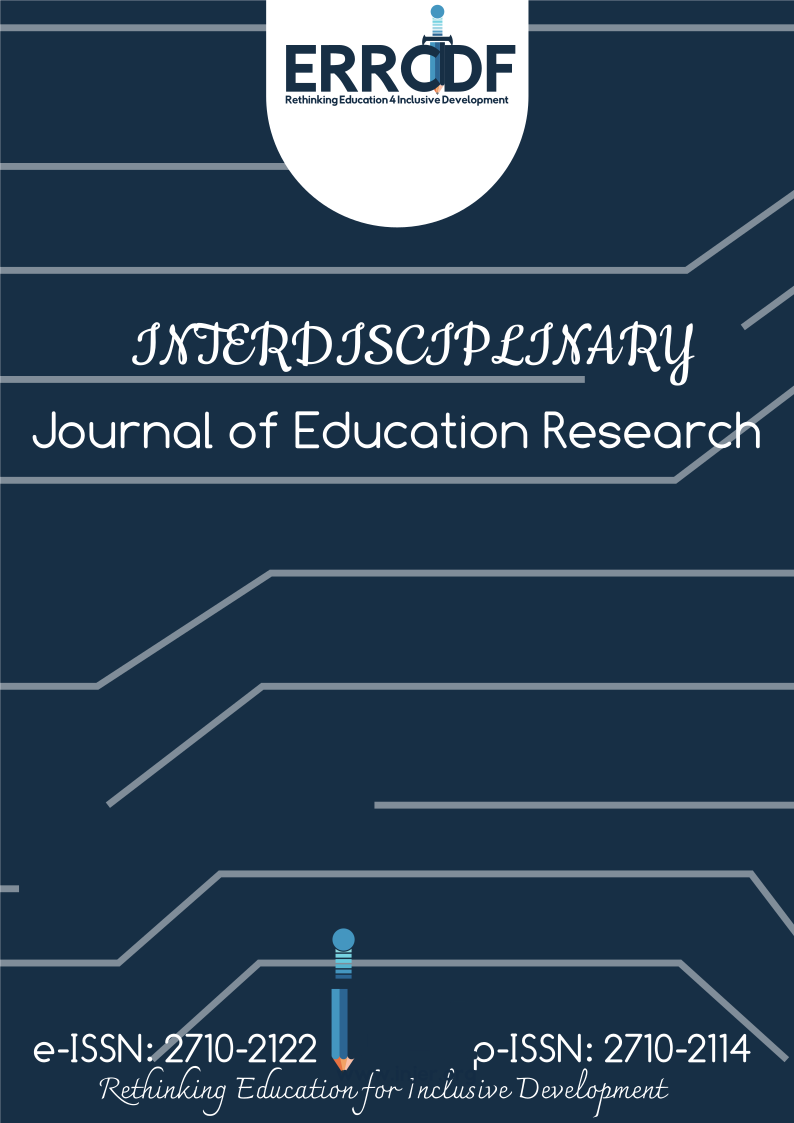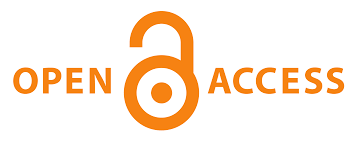Innovations in pedagogy and technology for engineering education: A systematic review
DOI:
https://doi.org/10.38140/ijer-2025.vol7.s1.10Keywords:
Critical thinking, engineering education, flexible learning, student, technologyAbstract
Engineering education has undergone a significant transformation driven by rapid technological advancements and innovative pedagogical approaches. This study presents a systematic review of 23 scholarly articles, integrating both qualitative and quantitative findings to explore the impact of technology on engineering education. Utilising the PRISMA guidelines, the review highlights the role of emerging educational technologies in enhancing student engagement, academic performance, and accessibility. Key findings emphasise the growing importance of flexible learning, which enables students to balance academic responsibilities with work and other commitments. Technologies such as virtual and augmented reality have emerged as powerful tools, offering immersive learning experiences that replicate real-world engineering scenarios. These advancements enhance conceptual understanding, problem-solving skills, and interdisciplinary collaboration, which are critical in preparing students for the evolving demands of a globalised workforce. Furthermore, the integration of information technology has revolutionised engineering education by streamlining instructional delivery, improving knowledge dissemination, and facilitating global connectivity in academic research and collaboration. However, the effectiveness of these innovations depends on their strategic and thoughtful implementation, considering diverse learner needs and ensuring equitable access. This study underscores the transformative potential of technology in engineering education, advocating for a balanced approach that maintains academic rigour while fostering creativity, critical thinking, and adaptability. By leveraging these innovations, higher education institutions can enhance learning experiences, better equip students for future challenges, and bridge the gap between theoretical knowledge and practical application in engineering disciplines.
References
Castells, M. (2000). Materials for an exploratory theory of the network society. The British Journal of Sociology, 51(1), 5-24. https://doi.org/10.1111/j.1468-4446.2000.00005.x
Chang, H. Y., Wu, H. K., & Hsu, Y. S. (2013). Integrating a mobile augmented reality activity to contextualise student learning of a socio-scientific issue. British Journal of Educational Technology, 44(3). https://doi.org/10.1111/j.1467-8535.2012.01379.x
Chen, C. M., & Tsai, Y. N. (2012). Interactive augmented reality system for enhancing library instruction in elementary schools. Computers & Education, 59(2), 638-652. https://doi.org/10.1016/j.compedu.2012.03.001
Collis, B., & Moonen, J. (2002). Flexible learning in a digital world. Open Learning: The Journal of Open, Distance and e-Learning, 17(3), 217-230. https://doi.org/10.1080/0268051022000048228
Danilaev, D. P., & Malivanov, N. N. (2020). Technological education and engineering pedagogy. The Education and Science Journal, 22(3), 55-82. https://doi.org/10.17853/1994-5639-2020-3-55-82
Eden, C. A., Chisom, O. N., & Adeniyi, I. S. (2024). Harnessing technology integration in education: Strategies for enhancing learning outcomes and equity. World Journal of Advanced Engineering Technology and Sciences, 11(2), 001-008. https://doi.org/10.30574/wjaets.2024.11.2.0071
Ferdig, R. E. (2006). Assessing technologies for teaching and learning: Understanding the importance of technological pedagogical content knowledge. British Journal of Educational Technology, 37(5), 749-760. https://doi.org/10.1111/j.1467-8535.2006.00559.x
Foster, L. (2001). Technology: Transforming the landscape of higher education. The Review of Higher Education, 25(1), 115-124. https://dx.doi.org/10.1353/rhe.2001.0018
Ghafar, A. (2020). Convergence between 21st century skills and entrepreneurship education in higher education institutes. International Journal of Higher Education, 9(1), 218. https://doi.org/10.5430/ijhe.v9n1p218
Harris, J., Mishra, P., & Koehler, M. (2009). Teachers’ technological pedagogical content knowledge and learning activity types: Curriculum-based technology integration reframed. Journal of Research on Technology in Education, 41(4), 393-416. https://doi.org/10.1080/15391523.2009.10782536
Howells, K. (2018). The future of education and skills: Education 2030: The future we want.
Huang-Saad, A., Morton, C., & Libarkin, J. C. (2018). Entrepreneurship assessment in higher education: A research review for engineering education researchers. Journal of Engineering Education, 107(2), 263. https://doi.org/10.1002/jee.20197
Jirgensons, M. (2014, April). Educating the future with disruptive e-learning solutions. In International Conference on Computer Supported Education (Vol. 2, pp. 65-70). SCITEPRESS. https://doi.org/10.5220/0004846500650070
Karabulut?Ilgu, A., Jaramillo Cherrez, N., & Jahren, C. T. (2018). A systematic review of research on the flipped learning method in engineering education. British Journal of Educational Technology,49(3), 398-411. https://doi.org/10.1111/bjet.12548
Khusainova, G. R., & Galikhanov, M. F. (2022, November). Development of engineering university educator’s creativity within the framework of the discipline “innovations in engineering pedagogy”. InAIP Conference Proceedings (Vol. 2647, No. 1). AIP Publishing. https://doi.org/10.1063/5.0104352
Koehler, M., & Mishra, P. (2009). What is technological pedagogical content knowledge (TPACK)? Contemporary Issues in Technology and Teacher Education,9(1), 60-70.
Kondratyev, V. V., Kazakova, U. A., & Kuznetsova, M. N. (2022). Development and implementation of the module “Engineering, education and pedagogy in Industry 4.0” in the structure of the curriculum “Innovative Pedagogy for Teachers of Engineering Universities” (iPET). In M. E. Auer, H. Hortsch, O. Michler, & T. Köhler (Eds.), Mobility for smart cities and regional development - challenges for higher education. ICL 2021. Lecture Notes in Networks and Systems (Vol. 390). Springer. https://doi.org/10.1007/978-3-030-93907-6_68
Levin, T., & Wadmany, R. (2008). Teachers’ views on factors affecting effective integration of information technology in the classroom: Developmental scenery. Journal of Technology and Teacher Education,16(2), 233-263. https://doi.org/10.1016/j.compedu.2011.04.003
Martin, S., Diaz, G., Sancristobal, E., Gil, R., Castro, M., & Peire, J. (2011). New technology trends in education: Seven years of forecasts and convergence. Computers & Education,57(3), 1893-1906. https://doi.org/10.1016/j.compedu.2011.04.003
McLain, M. (2022). Towards a signature pedagogy for design and technology education: A literature review. International Journal of Technology and Design Education,32(3), 1629-1648. https://doi.org/10.1007/s10798-021-09667-5
Michalaka, D., & Davis, W. J. (2015). Application of active learning techniques in undergraduate civil engineering curriculum. https://doi.org/10.18260/p.23558
Milgram, P., Takemura, H., Utsumi, A., & Kishino, F. (1995, December). Augmented reality: A class of displays on the reality-virtuality continuum. In Telemanipulator and telepresence technologies (Vol. 2351, pp. 282–292). SPIE. https://doi.org/10.1117/12.197321
Miranda, C., Goñi, J., Berhane, B., & Carberry, A. (2020). Seven challenges in conceptualising and assessing entrepreneurial skills or mindsets in engineering entrepreneurship education. Education Sciences, 10(11), 309. https://doi.org/10.3390/educsci10110309
Mpofu-Hamadziripi, N., Rauch, F., & Dulle, M. (2022, February). Transforming curricula in higher education: Description of two perspectives from the Global South and the Global North. In Frontiers in Education (Vol. 7, p. 775406). Frontiers Media SA. https://doi.org/10.3389/feduc.2022.775406
Munir, M. T., Jamwal, P. K., Li, B., Carter, S., & Hussain, S. (2024). Revolutionising engineering pedagogy: The role of 3D printing in modern engineering education. Innovations in Education and Teaching International, 1–19. https://doi.org/10.1080/14703297.2024.2346554
Ogwu, E. N., Emelogu, N. U., Azor, R. O., & Okwo, F. A. (2022). Educational technology adoption in instructional delivery in the new global reality. Education and Information Technologies, 28(1), 1065. https://doi.org/10.1007/s10639-022-11203-4
Page, M. J., McKenzie, J. E., Bossuyt, P. M., Boutron, I., Hoffmann, T., Mulrow, C. D., Shamseer, L., & Moher, D. (2020). Mapping of reporting guidance for systematic reviews and meta-analyses generated a comprehensive item bank for future reporting guidelines. Journal of Clinical Epidemiology, 118, 60–68. https://doi.org/10.1016/j.jclinepi.2019.11.010
Pepin, B., Biehler, R., & Gueudet, G. (2021). Mathematics in engineering education: A review of the recent literature with a view towards innovative practices. International Journal of Research in Undergraduate Mathematics Education, 7, 163–188. https://doi.org/10.1007/s40753-021-00139-8
Pigozzi, M. J. (2009). Quality education: A UNESCO perspective. In International perspectives on the goals of universal basic and secondary education (pp. 249–259). Routledge. https://doi.org/10.4324/9780203882146
Rapanta, C., Botturi, L., Goodyear, P., Guàrdia, L., & Koole, M. (2021). Balancing technology, pedagogy, and the new normal: Post-pandemic challenges for higher education. Postdigital Science and Education, 3(3), 715–742. https://doi.org/10.1007/s42438-021-00249-1
Southworth, J., Migliaccio, K., Glover, J., Reed, D., McCarty, C., Brendemuhl, J., & Thomas, A. (2023). Developing a model for AI across the curriculum: Transforming the higher education landscape via innovation in AI literacy. Computers and Education: Artificial Intelligence, 4, 100127. https://doi.org/10.1016/j.caeai.2023.100127
Wu, H. K., Lee, S. W. Y., Chang, H. Y., & Liang, J. C. (2013). Current status, opportunities, and challenges of augmented reality in education. Computers & Education, 62, 41-49. https://doi.org/10.1016/j.compedu.2012.10.024
Ye, H., & Li, C. (2022). Engineering education understanding expert decision system research and application. In V. Kumar (Ed.), Computational intelligence and neuroscience (Vol. 2022, p. 1). Hindawi Publishing Corporation. https://doi.org/10.1155/2022/9662301
Zhao, Y., Pugh, K., Sheldon, S., & Byers, J. L. (2002). Conditions for classroom technology innovations. Teachers College Record, 104(3), 482-515. https://doi.org/10.1177/016146810210400308
Downloads
Published
How to Cite
Issue
Section
License
Copyright (c) 2025 Nokulunga Xolile Mashwama, Bubele Madubela

This work is licensed under a Creative Commons Attribution 4.0 International License.










